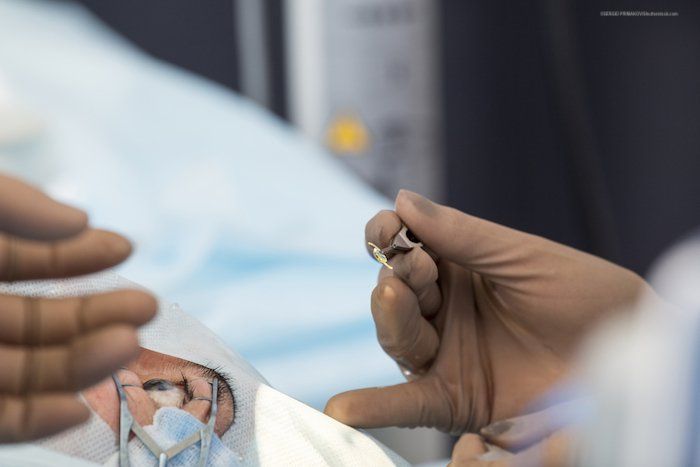Article
Managing residual astigmatism after toric IOL surgery
Author(s):
Residual astigmatism is not uncommon after toric IOL implantation. Depending on its cause and magnitude, lens reorientation may be a good solution.

Reviewed by John P. Berdahl, MD
Patients choosing a toric IOL are hoping for good uncorrected distance vision. When this goal is not achieved because implant misalignment is causing significant residual astigmatism, IOL rotation planned using a free online back-calculation tool (astigmatismfix.com, Ocular Surgical Data LLC) can be a safe, effective, and preferred solution, said John P. Berdahl, MD.

“Patients who choose a toric IOL have usually paid a price out of pocket, and surgeons should get them the refractive outcome they need to function without glasses,” said Dr. Berdahl, assistant clinical professor of ophthalmology, University of South Dakota, and private practice, Vance Thompson Vision, Sioux Falls, SD.
“Residual astigmatism that is present because the IOL is not in the intended location can often be addressed by excimer laser vision correction or IOL rotation,” he said. “Many surgeons do not have access to an excimer laser, however, and even if they do, rotating the IOL is an easier and safer approach assuming it can solve the problem and as long as the patient has an intact posterior capsule.”
The website (astigmatismfix.com) was created by Dr. Berdahl and David R. Hardten, MD, of Minneapolis, MN. To expand image, click here.
Surgeons enter the patient’s manifest refraction with cylinder in plus power, the toric IOL model, and the magnitude of astigmatism and axis of the toric lens. The back-calculator determines the ideal position of the toric IOL for minimizing the residual refractive error, the magnitude and direction of rotation needed, and the expected residual refraction. Surgeons can decide if the spherical equivalent outcome is acceptable so that they want to go forward and rotate the lens.
“Laser vision correction creates competing axes where the axis of the refraction is at one location, the axis of corneal astigmatism is at another, and the axis of the toric IOL is at a third location,” Dr. Berdahl said. “In contrast, IOL rotation neutralizes the corneal astigmatism with lenticular astigmatism and avoids putting a different ablative pattern on the cornea.
“Some people think that if you can induce less astigmatism by rotating a toric IOL off axis, but that is not true,” he added. “The best location for a toric lens is always in the axis of the astigmatism of the cornea.”
Misalignment impact
The effect of misalignment on the refractive outcome worsens with increasing cylinder power of the toric lens. For example, 5° of misalignment results in 17.5% loss of effect, but that translates into a loss of 0.18 D for a toric IOL with 1.03 D of cylinder power at the corneal plane and 0.71 D for an implant with 4.11 D of cylinder power at the corneal plane.
Surgeons should wait at least 1 week after the primary surgery before rotating the toric IOL and can wait up to 1 year, Dr. Berdahl said. While ideally it may be better to do the procedure sooner than later to reduce the patient wait time to have good uncorrected vision, patience may pay off because it may decrease the likelihood that the lens will re-rotate.
To perform the rotation, surgeons should mark the current and ideal axis, instill viscoelastic to inflate and protect the capsular bag, and place viscoelastic under the IOL to free the implant from the cul de sac. Using a Sinskey hook, they should then make sure the haptic is freed from the posterior capsule and use the instrument to rotate the IOL into the desired position. Viscoelastic is then removed.
Disclosures:
John P. Berdahl, MD
E: john.berdahl@vancethompsonvision.com
This article was adapted from Dr. Berdahl’s presentation at the 2017 meeting of the American Society of Cataract and Refractive Surgery. Dr. Berdahl is a consultant to and lecturer for companies that market toric IOLs.





